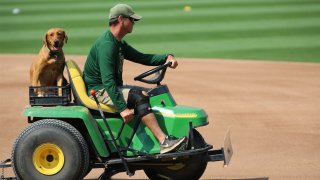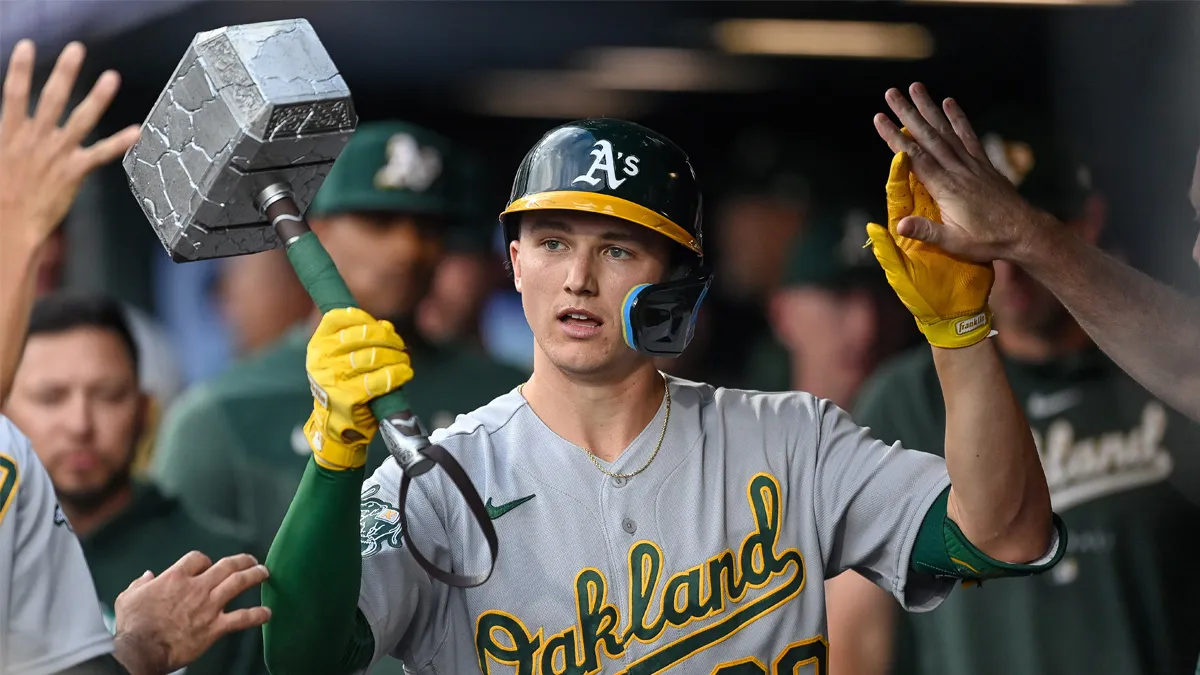
The A’s just wrapped up a three-game series with the Giants on Sunday night, the last action Oakland Coliseum will see for five days. Head groundskeeper Clay Wood went through his usual routine designed to keep the playing surface as pristine as possible.
When the home team returns to play the Seattle Mariners on Friday, their field will be near perfect. That’s a point of great pride for those charged with keeping it that way.
“We’re going to be looking good for that final weekend as the A’s are heading toward the postseason,” Wood said. “It’s a huge relief to know that they’ll be working on the best possible playing surface heading down the stretch. That’s such a relief, and a good feeling we haven’t been able to enjoy around here.”
Stay in the game with the latest updates on your beloved Bay Area and California sports teams! Sign up here for our All Access Daily newsletter.
If this were any of Wood’s previous 25 years on the job, he would’ve been up all Sunday night preparing Oakland Coliseum for football. The Raiders play the New Orleans Saints on Monday evening, but they’ll do it in a brand-new venue. They’ll open up Allegiant Stadium in a landmark event, the final part of their relocation to Las Vegas.
That means Oakland Coliseum is now a ballpark, not the last multi-purpose stadium in the United States. It also brings an end to what Wood calls transition season. That’s the three months of overlap between football and baseball seasons when the A’s and Raiders would share a venue and both remain dissatisfied with their playing surface. Football players hate playing on the infield dirt. Baseball players would inherit torn-up turf, tamped down enough to change how a ball plays.
“It’s frustrating when you play 50-60 baseball games on a surface and it’s perfect and then you play one football game on it and it’s thrashed,” Wood said. “All it took was one conversion process to change things. You can’t do anything normally when you’re converting the field. You really go into survival mode.”
Oakland Athletics
Transitions are no small feat. Going from baseball to football takes 20-24 hours, requiring cranes and heavy equipment and as many as 100 people working on the switch. All this work is done on plywood, which mashes turf into the earth. Going back to baseball takes 15-18 hours, and those processes often happened in a single night.
The work was mentally and physically taxing, and the frustration of seeing how it impacted play was certainly stressful.
“Seeing a ball skip to the wall when it would’ve checked up the week before,” Wood said. “We would see stuff like that, things that the average fan wouldn’t associate with a transition issue and it would drive us nuts.”
That won’t happen anymore. The baseball diamond will play true all season, which has one regular-season series remaining. There will be an opening-round playoff series after that, with one or more likely two games vital to World Series aspirations. The field will be in great shape. It will play true and not impede the A’s from putting their best foot forward.
RELATED: Luzardo's new pitch comes at perfect time for A's
That is a great stress relief compared to past seasons.
“It’s definitely strange, and it’s just now kicking in that we don’t have to convert the venue anymore,” Wood said. “We don’t have to deal with those issues anymore. It was part of my life for 25 years, but the mental freedom of not having to deal with it is pretty amazing. You never really stop to think about what you accomplished as a crew and what it took to make it work for both teams and both sports. It’s mind-boggling to think about what we did over all those years.”


